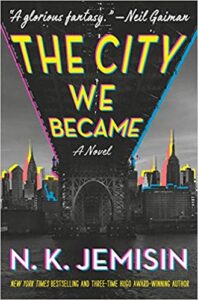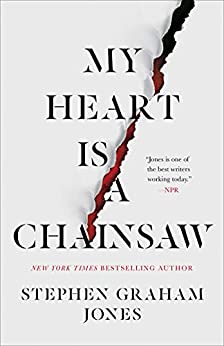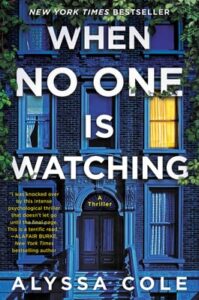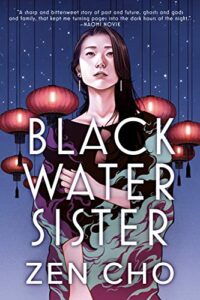












This is not so much a book list as a list that will lead you to books.
I like to browse at the library (a pastime, unfortunately, that is on hold for the time being) and have discovered a lot of interesting authors that way. The new books section there is how I discovered Nnedi Okorafor, Rivers Solomon, and C.L. Polk. While I was encountering these authors for the first time, there was also a push for readers to deliberately work on including more diverse writers in their reading material. Both then and now there’s an argument made that readers should just read what they want, without considering the race of the author. It is valid to read just what you want to read, or to read the same kind of thing (or the same book) over and over– as Ranganathan says, every reader his book. But why not push your boundaries a little? If what you’re looking for is a good story, there are a lot of good stories you might miss out on if you aren’t deliberately seeking out Black authors. There is frequently a different aesthetic to their books, and the stories can catch you in ways you don’t expect. This difference leads to looking at speculative fiction genres through a new lens. In the case of Black people in the African diaspora, that aesthetic is generally referred to as Afrofuturism, a term first coined by Mark Dery. Nigerian writer Nnedi Okorafor recently differentiated that from the writing of Black Africans, which she identifies as Africanfuturism (you can read about that on her website, which I’ve linked to below, just scroll down to her name). Definitely, not everything Black writers come out with falls into this aesthetic. Considered althogether, Black speculative fiction covers a broad range of approaches to science fiction, fantasy, folkloric, and fluid fiction (a term coined by literary theorist Kinitra Brooks). If you haven’t tried it, look up some of these authors. I think you’ll find something you like.
I’m going to note that these are extremely brief and incomplete summaries, and it is a far from complete list. To learn more about these authors and their books click on the links. Enjoy!
Steven Barnes (Goodreads): Barnes writes alternative history, science fiction. horror, nonfiction, sometimes with Tannarive Due or other co-authors.
Tannarive Due (author website) : Due writes horror and nonfiction, sometimes with Steven Barnes. Due is an academic who teaches and writes about Black speculative fiction, particularly horror.
Jewelle Gomez (author website) : Jewelle Gomez is best known as the author of The Gilda Stories, about a black lesbian vampire. She has written poetry, plays, and essays.
N.K. Jemisin (author website): N.K. Jemisin writes Afrofuturistic science fiction and fantasy. Jemisin won three consecutive Hugo awards for Best Novel for the books in her Broken Earth Trilogy.
Walter Mosely (author website): mysteries, science fiction, nonfiction. Mosely is best known for his Easy Rawlins mystery series but has written in a variety of genres.
Samuel R. Delany (author website): science fiction, LGBTQ+ fiction, nonfiction. Delaney is the first Black person to be recognized as a modern science fiction writer.
Wrath James White (publisher website). interviews at Monster Librarian : extreme horror. Click on these links to see our reviews: Yaccub’s Curse, Succulent Prey, The Resurrectionist, Sacrifice, Sloppy Seconds,and Vicious Romantic
Sumiko Saulson (author website): horror, graphic novels, nonfiction on black women in horror. In addition to writing fiction, Saulson is the compiler of 100 Black Women in Horror (click here to see our review)and editor of the anthology Black Magic Women: Terrifying Tales by Scary Sisters.
Octavia Butler (official website of the Octavia Butler Estate): science fiction, alternative history, dystopian fiction Butler was the first recognized black woman author of modern science fiction and an inspiration for many Afrofuturist authors. See our review of her Earthseed Trilogy, which includes Parable of the Sower and Parable of the Talents here.
Tomi Adeyemi (author website) : YA Africanfuturist fantasy. Adeyemi is the bestselling author of the Legacy of Orisha series.
Evan Winter (Goodreads), interview at Tor.com: Africanfuturist epic fantasy.
Nnedi Okorafor (author website), Goodreads: Okorafor is an award-winning Nigerian-American science fiction and fantasy author who defines herself as an Africanfuturist and Africanjujuist (visit her author website for her explanation)
P. Djeli Clark (author website): Clark is an academic who writes nonfiction on Black speculative fiction, as well as a writer of Black speculative fiction, including alternative history, science fiction, and fantasy.
Victor LaValle (author website): Lavalle teaches at Columbia University. He writes horror, science fiction, and fantasy. Lavalle has won the Bram Stoker Award for his novella The Ballad of Black Tom (for our review click here) and the graphic novel Victor Lavalle’s Destroyer (for our review, click here).
Nalo Hopkinson (author website): Born in Jamaica, Nalo Hopkinson describes herself as a writer of fantastical fiction. She’s written nine books, including the award-winning Brown Girl in the Ring. She’s a professor of creative writing at the Univeristy of California Riverside.
Alaya Dawn Johnson (author website): is the author of YA and adult urban fantasy and speculative fiction, including the Andre Norton award-winning Love Is the Drug at the Nebula Awards.
C.L. Polk (author website): C.L. Polk is the author of the Kingston Cycle, a fantasy which takes p;ace in a steampunk-like setting similar to Edwardian England. The first book, Witchmark, won the World Fantasy Award and was nominated for the Lambda, Nebula, Locus, and Aurora awards.
Daniel Jose Older (author website) : Daniel Jose Older’s writing includes historical fantasy for middle-graders, the award winning YA Shadowshaper series, and adult urban fantasy .
C.T. Rwizi: C.T. Rwizi is originally from Zimbabwe and Swaziland, lived in Costa Rica and the United States, and now resides in South Africa. His debut fantasy novel, Scarlet Odyssey, was just released. Read our review here.
L.L. McKinney (author website): McKinney is the author of the YA Nightmare-verse dark fantasy books, beginning with A Blade So Black.
Rivers Solomon (author website): Solomon’s first book, An Unkindness of Ghosts, was a finalist for the Lambda, Tiptree, Locus, and Hurston/Wright awards and won a Firecracker Award. Their novella, The Deep, a collaboration with the musical group Clipping (which includes Daveed Diggs, formerly of Hamilton) is an outstanding work of Black speculative fiction. Read our review here.
Valjeanne Jeffers (Goodreads), (author website): Jeffers is the author of the Immortals series. She has published fantasy, science fiction, and erotica, particularly in Afrofuturist subgenres such as steamfunk and cyberfunk
Justina Ireland (author website): Ireland is the author of the YA alternate history horror novel Dread Nation and its sequel, Deathless Divide. She has also written other YA fantasy novels and writes for the Star Wars franchise.
Nicky Drayden (author website): Drayden writes Afrofuturist science fiction and fantasy.
Andrea Hairston (author website): Hairston is a playwright, novelist, and professor of theatre and Africana at Smith College. She is a feminist science fiction writer who has published novels, plays, and essays. Her book Redwood and Wildfire won the Tiptree and Carl Brandon Society awards.
Rebecca Roanhorse (author website): Roanhorse is an award-winning speculative fiction writer who has both Ohkay Owingeh Pueblo and African-American heritage. She has written post-apocalyptic urban fantasy and middle-grade fantasy, and writes for the Star Wars franchise.














Follow Us!